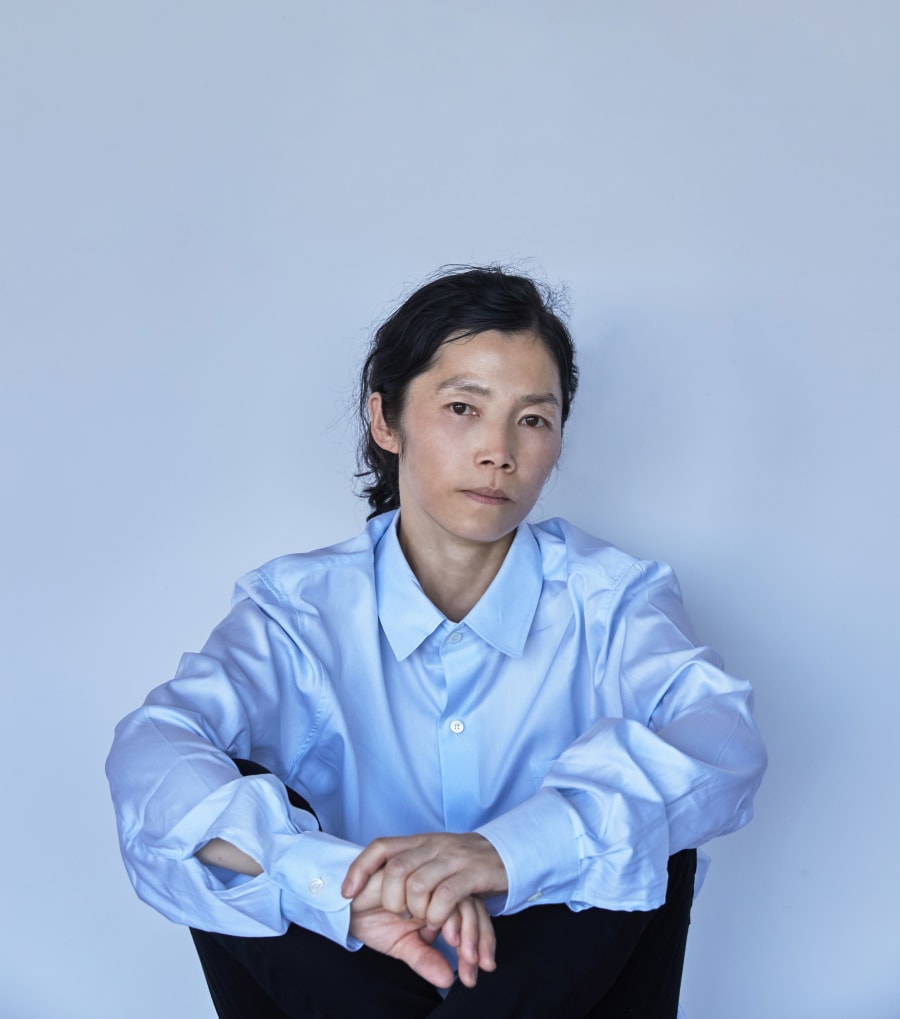Every six weeks, members of Art Basel’s Editorial team choose their favorite exhibitions of the moment.
John Akomfrah, ‘Listening All Night to the Rain’
British Pavilion
Giardini
It’s hard to overstate John Akomfrah’s significance. The artist and his collaborators at Smoking Dogs Films are leading voices in a generation of artists who, since the 1980s, have pried open the notoriously closed British art world and forced it to reckon not only with the country’s colonial past but also – crucially – its multicultural present. The depth of Akomfrah’s research always shines through his spectacular video installations and this biennale contribution is no different. His new multiscreen-work explores acoustemology (the study of human engagement with the sonic) and the ability of sound to evoke identity and a sense of belonging. C.M.
Vlatka Horvat, ‘By the Means at Hand’
Croatian Pavilion
Fàbrica 33
It’s impossible to predict how London-based, Croatia-born artist Vlatka Horvat’s presentation in the Croatian Pavilion might look – but that’s part of the concept. ‘By the Means at Hand’, curated by Antonia Majaca, brings together some 200 drawings that were created by the artist’s friends and family, even by strangers – all ‘foreigners’ scattered around the world – and then transported to Venice, not by post or a shipping service, but by hand, via informal networks. Horvat is in residence in the pavilion and will be sending artworks to her interlocutors in return. Connecting to the Biennale’s theme of ‘Foreigners Everywhere’, the exhibition reflects the peripatetic lives many of us lead these days, as well as the improvised transport methods still so often used to move important documents, gifts, and money to and from Croatia – and places far beyond. K.B.
Tesfaye Urgessa, ‘Prejudice and Belonging’
Ethiopian Pavilion
Palazzo Bollani
Tesfaye Urgessa, an artist whose work delves into the complexities of identity and belonging, represents Ethiopia at its first-ever national pavilion with ‘Prejudice and Belonging’. Curated by British author and poet Lemn Sissay, the exhibition is a significant moment for the artist and his country as a symbol of Ethiopian contemporary art’s evolving narrative. Born in 1983 in Addis Ababa, Urgessa’s paintings incorporate Ethiopian iconography and elements of the German Neo-Expressionism encountered during his studies in Stuttgart. Often portraying classicized human figures in gestural, enigmatic forms, his work invites viewers to reflect on the psychological states of his subjects. A.R.
Massimo Bartolini, ‘Due qui/To Hear’
Italian Pavilion
Arsenale
Curated by Luca Cerizza, this edition’s Italian Pavilion showcases artist Massimo Bartolini’s ‘Due qui/To Hear.’ Renowned for embracing a wide array of languages and materials, the Italian artist presents a project centered around an immersive sound and environmental installation, delving into the essence of self-awareness within the biennale’s theme of ‘Foreigners Everywhere’. Bartolini’s exhibition fosters dialogue around ideas of belonging and understanding within a global context and features specially crafted contributions by composers Caterina Barbieri and Kali Malone, and writers Nicoletta Costa and Tiziano Scarpa. P.S.
Tunji Adeniyi-Jones, Ndidi Dike, Onyeka Igwe, Toyin Ojih Odutola, Abraham Oghobase, Precious Okoyomon, Yinka Shonibare CBE RA, and Fatimah Tuggar, ’Nigeria Imaginary’
Nigerian Pavilion
Rio Terà Canal, 3121
Home to more than 218 million people, Nigeria is Africa’s most populated country, and Nigerian communities are found around the world. This multiplicity of identities, and how history has shaped them, is central to ‘Nigeria Imaginary’, which brings together work by eight Nigeria-based and diasporic artists. On view are established practitioners such as Yinka Shonibare CBE RA, known for his vibrant sculptures highlighting the links between Nigeria and Britain, through to lesser-known voices including Fatimah Tuggar, who uses AI to explore themes of gender and race. Precious Okoyomon, whose installation concluded the parcours in the Arsenale during the biennale’s 2022 edition, also contributes. Curated by Aindrea Emelife and organized by the Museum of West African Art (MOWAA) in Benin City, ‘Nigeria Imaginary’ will open there this fall. K.C.
Josèfa Ntjam, ‘swell of spæc(i)es’
Accademia di Belle Arti di Venezia
‘Swell of Spæc(i)es’, a new project by artist Josèfa Ntjam, explores the central role of plankton in a new creation myth that merges contemporary marine scientific discoveries with the ancient cosmogony of the Dogon, an ethnic group located mainly in Mali. The myth connects deep-sea life to celestial bodies, intertwining biological, mythical, and cosmic narratives. The exhibition features an immersive environment with sonic sculptures and a film scored by Fatima Al Qadiri, displaying a circular narrative of creation and resurgence through 3D-animations and real-world footage. It draws parallels between Dogon stories, marine fossils in space debris, and histories of resistance and emancipation – employing digital tools to create interspecies characters that navigate marine and cosmic landscapes, reflecting a poetics of alterity and interconnectedness. J.F.
‘STRANIERI OVUNQUE - FOREIGNERS EVERYWHERE’
60th Venice Biennale
From April 20 to November 24, 2024
Art Basel’s Editorial team is composed of Juliette Amoros, Karim Crippa, Jeni Fulton, Coline Milliard, Alicia Reuter, and Patrick Steffen. Art Basel’s commissioning editors are Stephanie Bailey, Kimberly Bradley, and Emily McDermott.
Caption for top image: Josèfa Ntjam, swell of spæc(i)es (film still), 2024. Commissioned by LAS Art Foundation. Courtesy of the artist, LAS Art Foundation, Galerie Poggi, Paris, and NıCOLETTı, London © ADAGP, Paris, 2024.


